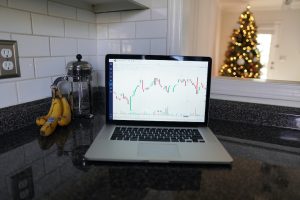Forex trading is all about understanding the market trends and patterns. It is crucial to identify the support and resistance levels in the forex market to make informed trading decisions. These levels help traders to identify potential entry and exit points and set up stop-loss orders. Forex charts with support and resistance levels can help traders to determine the best time to enter and exit the market.
Setting up forex charts with support and resistance is not complicated. The process is straightforward, and traders need to follow a few simple steps to set up the charts correctly. In this article, we will explain how to set up forex charts with support and resistance levels.
Step 1: Choose a Forex Trading Platform
The first step in setting up forex charts with support and resistance is choosing a forex trading platform. There are many forex trading platforms available in the market, and traders should choose one that suits their needs. Some popular forex trading platforms include MetaTrader 4, MetaTrader 5, cTrader, and TradingView.
Step 2: Select a Currency Pair
After selecting a forex trading platform, traders need to select a currency pair to trade. Forex trading platforms offer various currency pairs, and traders should choose the one that they are most comfortable trading. Traders should also ensure that they have access to real-time forex data for the currency pair they have selected.
Step 3: Choose the Timeframe
The next step in setting up forex charts with support and resistance is choosing the timeframe. Forex trading platforms offer various timeframes, ranging from one minute to one month. Traders should select a timeframe that suits their trading strategy. Short-term traders may prefer to use shorter timeframes, while long-term traders may prefer to use longer timeframes.
Step 4: Add Support and Resistance Levels
The next step is to add support and resistance levels to the forex chart. Support and resistance levels are key levels in the market where the price tends to bounce off. These levels are areas where the market has previously shown support or resistance. Support levels are areas where the price tends to bounce up from, while resistance levels are areas where the price tends to bounce down from.
Traders can add support and resistance levels to their forex charts in several ways. They can use horizontal lines to mark the support and resistance levels or use trend lines to identify the levels. Traders can also use indicators such as moving averages, Bollinger bands, and Fibonacci retracement levels to identify support and resistance levels.
Step 5: Monitor the Chart
The final step in setting up forex charts with support and resistance is to monitor the chart. Traders should regularly monitor the chart to identify any changes in the support and resistance levels. They should also pay attention to any price action signals that may indicate a potential breakout or reversal.
Conclusion
Setting up forex charts with support and resistance levels is essential for successful forex trading. These levels help traders to identify potential entry and exit points, set up stop-loss orders, and make informed trading decisions. Traders should choose a forex trading platform, select a currency pair, choose the timeframe, add support and resistance levels, and monitor the chart to set up forex charts with support and resistance levels. With these steps, traders can effectively analyze the market trends and patterns and make profitable trades.






